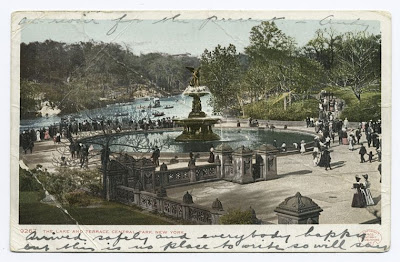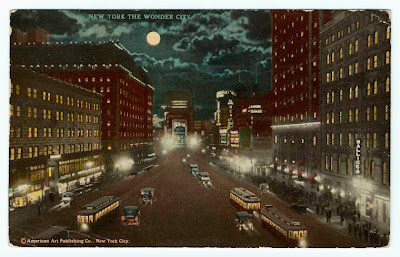As you may know, construction workers are busy creating "Shop Life", a new exhibit at the Tenement Museum which will trace the commercial history of 97 Orchard Street. Educator Abigail Ladd found surprising commonalities with the Lustgarten family, who operated a family-owned kosher butcher store in our building in the early 20th century.
As an Educator at the Tenement Museum, I draw from my personal experiences to tell the stories of the former residents of 97 Orchard. Though they lived in different times, under different circumstances, some things are universal: we all struggle to do the best we can with what we have and try to enjoy it along the way.
I can't help but relate to our upcoming exhibit “Shop Life”, which tells the stories of families who lived and ran businesses at 97 Orchard Street.
Raised on a hilltop in Vermont, my four siblings and I gave up city life when my parents decided to start a green energy construction company (way before green was cool). Since birth we were unpaid labor (It’s not called a family business for nothin’).
 |
| The author (in red) and her family at home in 1995 |
My first job at the ripe old age of five was messenger, relaying information from my mother in the house to my father in the ‘Shop’, with or without clothes on. At six, I knew my father’s pager number by heart and could forward him numbers. As technology progressed, we were one of the first families with a computer at home. My father graduated from pager to car phone and eventually a cell phone, which became the bane of my existence. Even now there is not a lot of cell service in Vermont, but back then there was only one location on our fourteen acres to receive a call...the head of my bed. My father was up at five and on the phone by five-thirty most days orchestrating things from the corner of mine and my sister’s bedroom. I learned to sleep through anything.
Most memorable was the Christmas Eve when my father and mother packed the entire family in two cars (we couldn’t fit in one) and drove us to a construction site. One of my father’s customers called the day before informing him that he and his family were going to drive to their second home for Christmas Day and asked everything be finished ahead of schedule. Thankfully, everything was finished, but not cleaned. Instead of calling in ‘the guys’ who had the day off, it being Christmas Eve and all, my parents used the labor readily accessible to them - us. I remember complaining to my mother - what else would you expect from a thirteen year old.
“This is child labor!” I exclaimed.
“Yup. Why do you think we had so many of you?” She said flatly.
It was a joke that was recycled by both my parents over the years and when we asked for pay for our efforts they would ask us a series of questions:
“Do you live in our house?”
“Yes.”
“Do you eat our food?”
“Yes.”
“Are you a member of this family?”
“Yes.”
“Well, there you go.”
As a kid, this was incredibly annoying. As an adult, it was an invaluable training in how to be a member of a community, not just a family community, but a larger community as well.
I think of this when I think of the Lustgarden family’s butcher shop once located at 97 Orchard Street. Though it was 1902, I’m sure similar conversations happened in the small apartment located behind their shop.
 |
The Lustgarten family c.1887; All members of the family--even five year old William--have donned aprons, ready to be called into work at any moment...
|
The Lustgardens’ daughter Rebecca had to cook and clean in a hot, stuffy tenement, the smell of raw meat drifting through, while her younger siblings went on to higher education and her parents cajoled her with the phrase: “You do what you do for family.” Or William coming home from a long day at school with piles of homework to find a line running right out the door of the ‘Shop’ and being enlisted, whether he likes it or not, to help out behind the counter. Or the arguments between Israel and Goldie about life and work, which probably sounded much like my parents.
My mother always chastised my father for all the labor he did for neighbors free of charge, but when something broke at home she had to get someone else to fix it. My father always wanted to spend more money on his motorcycle than on household essentials.
If people are people are people, then families are families are families, no matter their race, religion, creed, or immigration status. Communities are built not by the streets bordering them, but by the people in them--the people who work downstairs and live upstairs or across the street. Families are the atoms of society, building the communities they live in and, eventually trickling up or down or maybe even sidewaysto form a culture.
--
Posted by Abigail Ladd
















